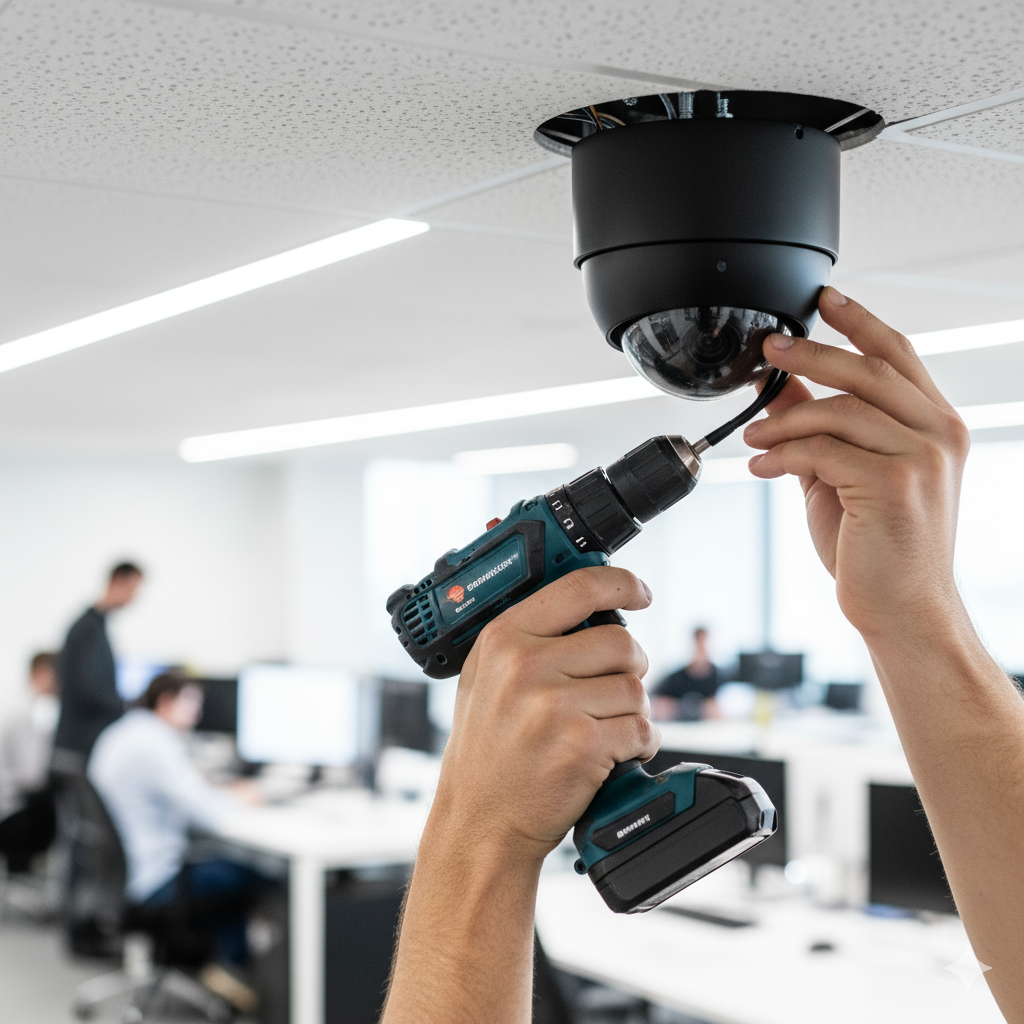Investing in a CCTV (Closed-Circuit Television) system is one of the most effective steps a business owner can take to enhance security, protect assets, and ensure peace of mind. However, a successful installation requires more than just buying cameras and mounting them on walls. Proper planning is essential to avoid costly mistakes and ensure your system meets your actual needs.
Before you begin, here are the key technical and practical aspects you should understand.
1. Camera Type: Analog vs. IP
The first major decision is choosing between analog and IP cameras.
- Analog Cameras: These are the traditional type. They send a video signal to a Digital Video Recorder (DVR) via coaxial cable. While generally less expensive upfront, they offer lower resolution and are less scalable.
- IP (Internet Protocol) Cameras: These are modern digital cameras. They send video data as a digital stream over a network cable (like Cat6) to a Network Video Recorder (NVR). IP cameras provide much higher resolution (HD, 4K), better scalability, and advanced features like remote analytics. They are the current standard for new business installations.
Recommendation: For most new business systems, IP cameras are the preferred choice due to their superior image quality and flexibility.
2. Key Specifications: Resolution, Storage, and Field of View
- Resolution: This determines how clear the image is. Measured in pixels (e.g., 1080p, 4K). Higher resolution allows you to zoom in on footage and identify details like faces or license plates clearly. Don’t settle for less than 1080p.
- Storage: How much video can you save? This depends on the number of cameras, their resolution, their frame rate, and how long you need to retain footage. Systems can use Hard Disk Drives (HDDs) or cloud storage. Plan for at least 30 days of retention for most businesses.
- Field of View (FOV): This is how much area a camera can see. A wide FOV is good for covering open spaces, but may lack detail. A narrower FOV is better for identifying details at specific points like entrances or cash registers.
3. Strategic Camera Placement
The goal is to eliminate blind spots and create overlapping coverage.
- Cover Critical Areas: Prioritize all entry and exit points, including doors, windows, and loading docks.
- Identify High-Value Zones: Point cameras at cash registers, safes, inventory storage areas, and server rooms.
- Consider Internal Traffic: Monitor main hallways, lobbies, and common areas.
- Height and Angle: Mount cameras at a height of 8-10 feet, angled slightly downward to capture clear facial images without being easily tampered with.
4. Don’t Forget Lighting and Connectivity
- Lighting: Can the camera see in the dark? For 24/7 coverage, ensure you have cameras with built-in Infrared (IR) night vision or install external lighting in key areas.
- Power and Connectivity: How will the cameras get power and transmit data? IP cameras often use Power over Ethernet (PoE), which sends both power and data through a single network cable. This simplifies installation and improves reliability. Ensure your network switch is PoE-capable.
5. The Installation Process
A professional installation involves:
- Running Cables: Neatly routing and securing Ethernet or coaxial cables through walls and ceilings.
- Mounting Hardware: Securely fixing cameras, monitors, and the NVR/DVR in place.
- Configuration: Setting up the recording schedule, motion detection zones, user access, and remote viewing capabilities.
Next Steps
A well-planned CCTV system is a powerful tool for deterring theft, resolving disputes, and creating a safer environment for employees and customers. By understanding these fundamentals, you can make informed decisions and communicate effectively with installation professionals.


